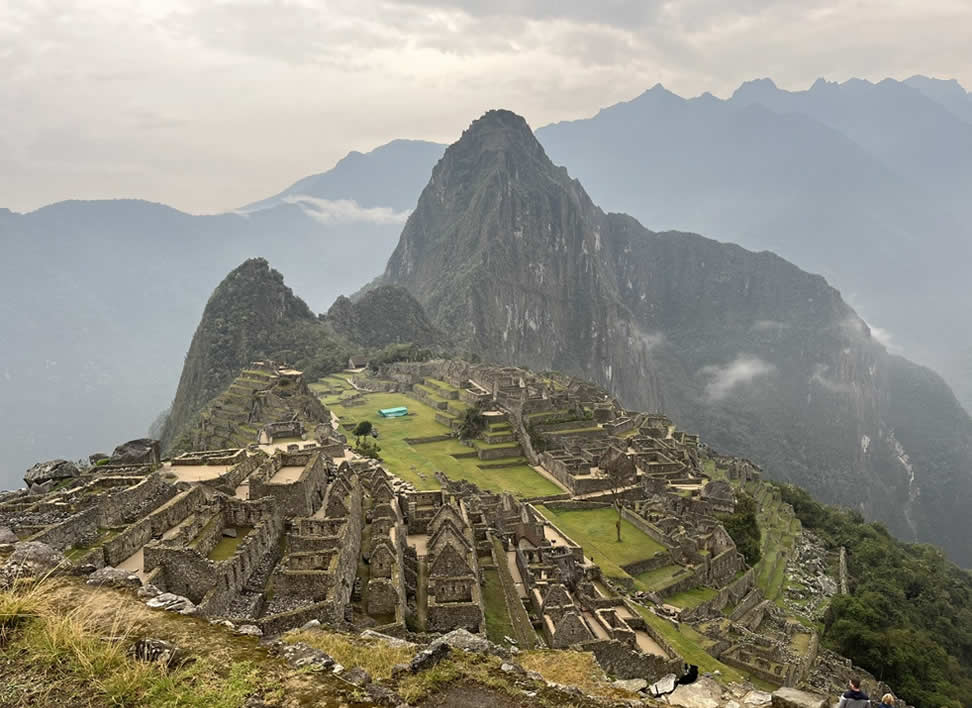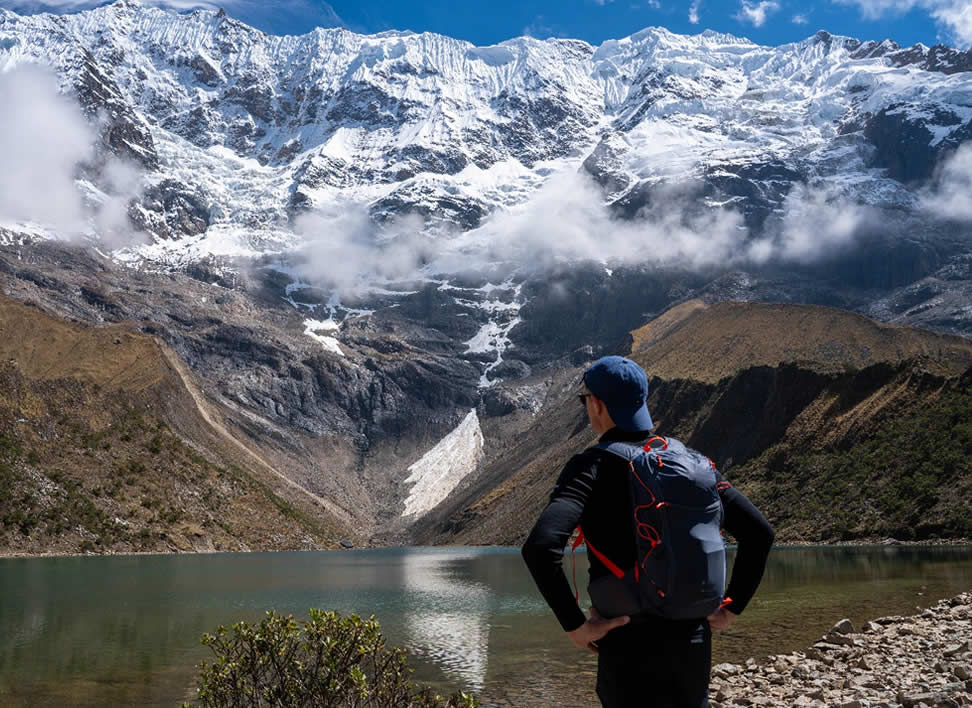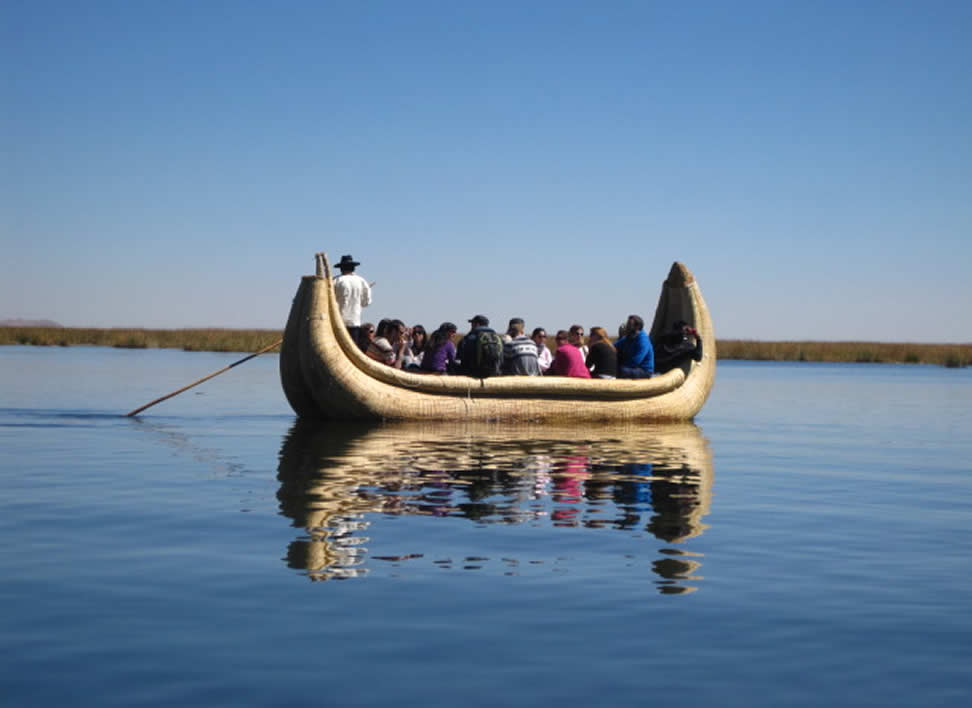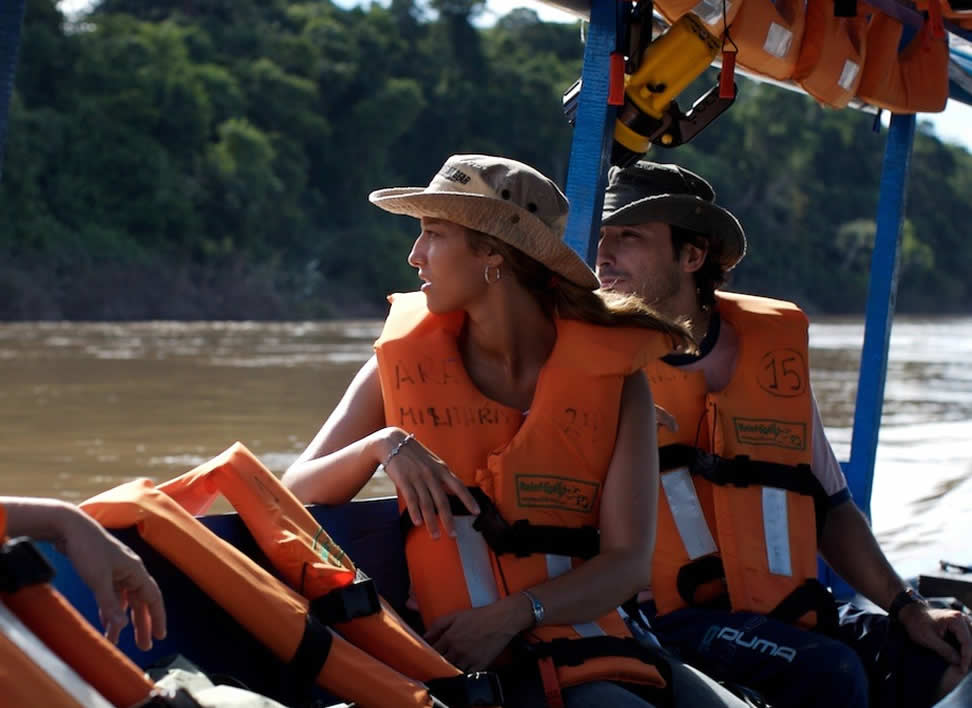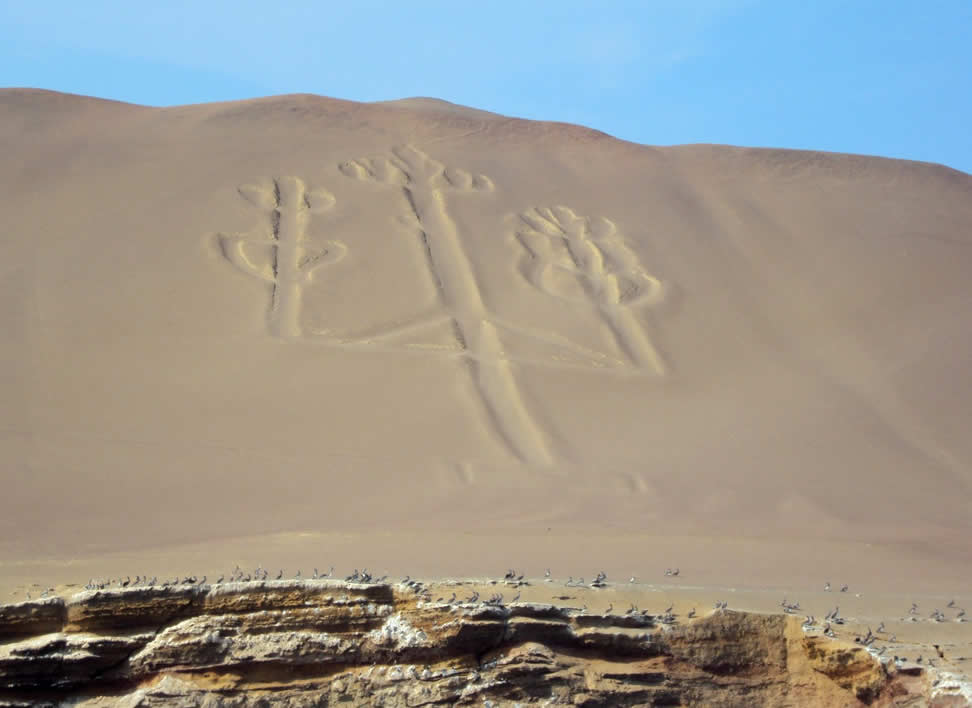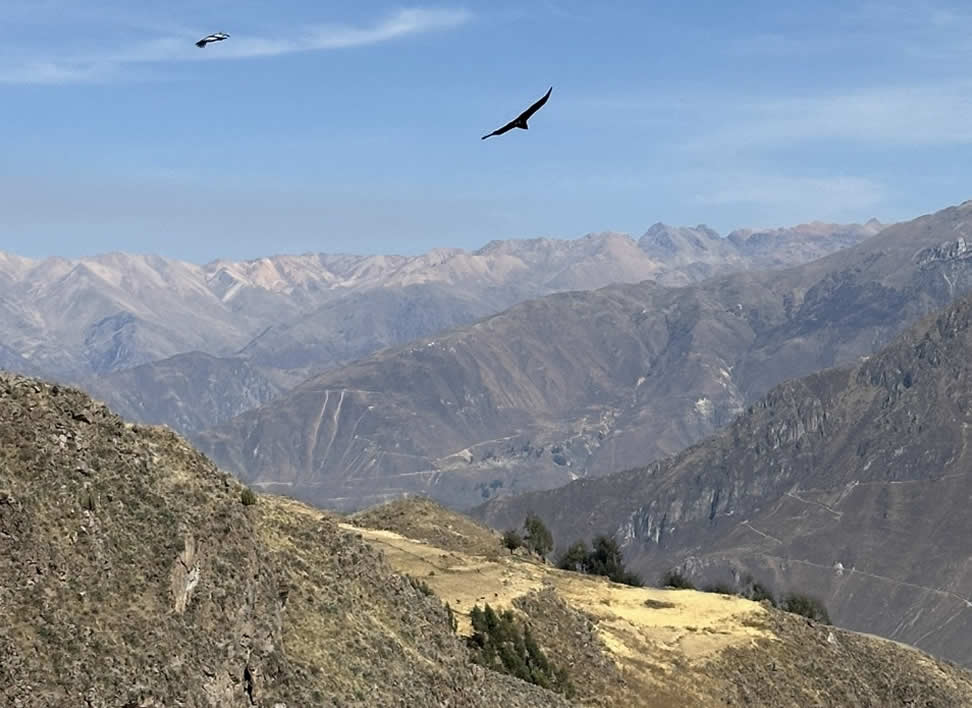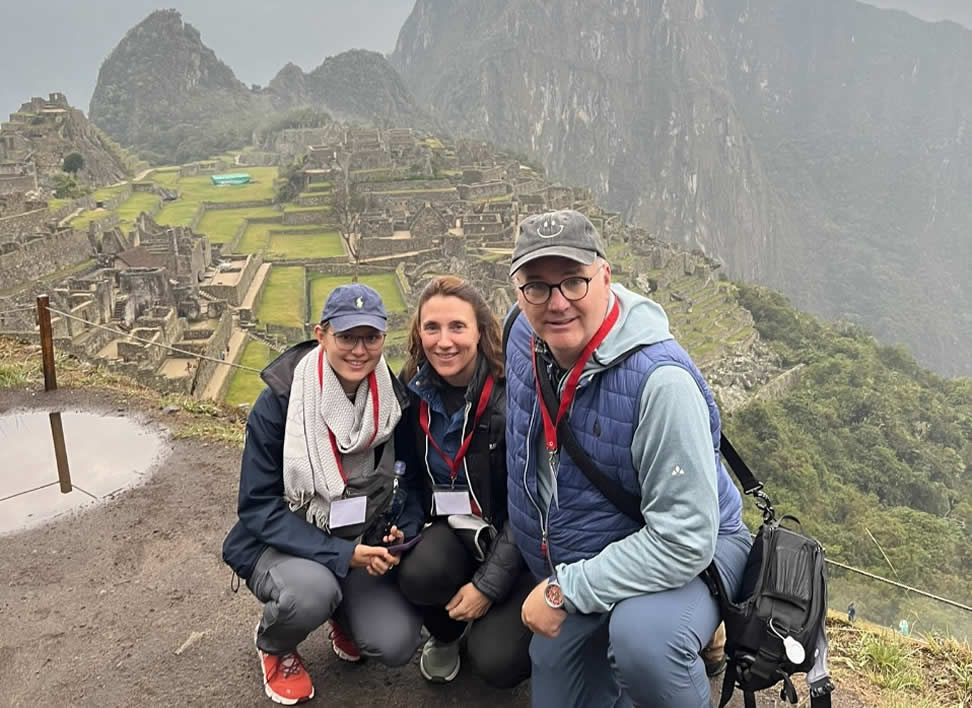15 DAY ITINERY: PERU AND BOLIVIA - THE BEST OF THE ANDES
15 DAY ITINERY: PERU AND BOLIVIA - THE BEST OF THE ANDES
Day 1: Arrival in Lima
Arrival at Jorge Chávez International Airport in Lima, where our representative will give you a warm welcome to the land of the Incas. Private transfer to your selected hotel in the exclusive districts of Miraflores or Barranco, located along the Pacific Ocean. Lima, the former “City of Kings” and current Peruvian capital, is home to more than ten million inhabitants and represents the perfect meeting point between historical tradition and Latin American culinary innovation. Rest at your hotel to recover from your journey and prepare for the adventure that will begin the following day.
Day 2: Lima – Flight to Cusco
Breakfast at the hotel. Transfer to the airport to take your flight to Cusco, the ancient capital of the Inca Empire. Upon arrival, reception and transfer to your hotel in the historic center. Free afternoon to acclimatize to the altitude (3,399 masl). We recommend walking leisurely around the Plaza de Armas, drinking coca tea, and resting to facilitate adaptation. The historic center of Cusco, declared a UNESCO World Heritage Site, is perfect for a first slow-paced exploration, admiring its cobblestone streets, Inca walls, and colonial architecture. Welcome dinner with folkloric show at a traditional restaurant, where you can taste typical Andean dishes while enjoying dances and music that represent the rich cultural tradition of the region.
Day 3: City Tour in Cusco
Free morning to continue your acclimatization. Take the opportunity to visit one of the interesting museums in the city such as the Museum of Pre-Columbian Art (MAP) or the San Pedro market, where you can observe everyday Cusco life and local products. In the afternoon, guided tour of the city, visiting the Plaza de Armas, the Cathedral that houses invaluable works of colonial art, including the famous “Last Supper” with roasted guinea pig, and the Koricancha or Temple of the Sun, an ancient Inca religious center on which the Convent of Santo Domingo was built. You will admire the perfect Inca masonry that has withstood centuries and several earthquakes. Continuation to the impressive Inca ruins of the surroundings: the fortress of Sacsayhuamán, with its enormous perfectly assembled stone blocks, some of more than 100 tons; the amphitheater of Qenqo, carved into a single rock formation and used for rituals related to ancestor worship; the red fort of Puka Pukara, an ancient control post of the Inca road; and Tambomachay, known as “the baths of the Inca,” a complex of fountains and canals dedicated to the cult of water. Return to the hotel and free evening to enjoy Cusco’s vibrant nightlife, perhaps visiting a restaurant offering traditional dishes such as cuy al horno (baked guinea pig), Andean trout, or lomo saltado (stir-fried beef), accompanied by live folk music.
Day 4: Sacred Valley of the Incas
Full-day excursion to the Sacred Valley of the Incas, so called for its extraordinary fertility and for having been one of the main corn production areas of the Empire. Visit to the colorful Pisac market, where you can purchase beautiful handicrafts including textiles, ceramics, silver jewelry, and reproductions of Inca antiquities, and to its impressive Inca ruins with agricultural terraces that extend along the mountainside, offering spectacular views of the valley. Buffet lunch at a country restaurant where you can taste traditional Andean dishes, possibly including pachamanca, an ancestral cooking method underground. Continuation to Ollantaytambo, one of the most monumental architectural complexes of the ancient Inca Empire, still inhabited today and maintaining its original urban layout. You will climb to its imposing archaeological zone with terraces, astronomical temples, and the unfinished “Temple of the Sun” with its pink granite monoliths of more than 40 tons transported from quarries located more than 5 km away. Transfer to your hotel in the Sacred Valley to enjoy the tranquility of this beautiful natural environment, surrounded by mountains and the Urubamba River.
Day 5: Machu Picchu
Early in the morning, transfer to Ollantaytambo station to board the train to Aguas Calientes. The approximately 1.5-hour journey offers beautiful views of the Urubamba River winding between mountains and changing ecosystems, from the agricultural valley to the high Andean cloud forest. Upon arrival, ascent by bus along a winding road of approximately 30 minutes to the citadel of Machu Picchu, one of the Seven Wonders of the Modern World. You will arrive just in time to contemplate how the first rays of the sun progressively illuminate this masterpiece of Inca architecture. The guided tour will be adapted according to the circuit available at the time of your visit (Circuit 1, 2, 3, or 4, determined by the Archaeological Park authorities).
Your guide will explain the possible functions of the main structures and will relate the theories about this mysterious city built in the 15th century and abandoned shortly after the Spanish conquest, remaining hidden from the Western world until its scientific “rediscovery” in 1911 by Hiram Bingham. You will admire masterpieces such as the Temple of the Sun, the Intiwatana (possible astronomical observatory), the Temple of the Three Windows, the Sacred Plaza, and the Temple of the Condor. Free time to explore on your own or simply sit and meditate before such an impressive human work. Lunch at a local restaurant in Aguas Calientes. In the afternoon, train journey back to Ollantaytambo and private bus transfer to Cusco (approximately 2 additional hours). Arrival at your hotel in Cusco.
Day 6: Cusco – Puno (Transport Options)
After breakfast, three options for your journey to Puno:
OPTION 1 – TOURIST BUS: Departure by tourist bus along the “Sun Route” to Puno. During this spectacular journey of approximately 10 hours, you will make stops at sites of interest such as the “Sistine Chapel of America” in Andahuaylillas, a 17th-century church with extraordinary murals and a carved cedar ceiling covered in gold leaf; the ruins of Raqchi, where the temple to the god Wiracocha stands out, an impressive roofed structure 92 meters long; La Raya pass (4,335 masl), the highest point of the route with panoramic views of the Andes and the watershed between the Titicaca and Amazon basins; and the Lithic Museum of Pukara, with its stelae and sculptures belonging to one of the oldest cultures of the highlands. Buffet lunch included at a restaurant en route. Arrival in Puno at sunset.
OPTION 2 – TITICACA TRAIN: Travel aboard PeruRail’s Titicaca Train, an intermediate option in comfort and price. This approximately 10-hour journey offers beautiful views of the highlands from large panoramic windows, snack and beverage service, and a stop at La Raya for photographs and handicraft purchases. Includes gourmet lunch and onboard entertainment inspired by Andean culture. The train has an observation car from where you can take excellent photographs of the landscape. Arrival at Puno train station at sunset.
OPTION 3 – ANDEAN EXPLORER TRAIN: Luxury experience aboard PeruRail’s Andean Explorer train, one of the most luxurious trains in South America. This approximately 10-hour journey offers incomparable views of the highlands from the comfort of elegantly decorated cars in the style of the 1920s. Includes three-course gourmet lunch prepared with local ingredients, afternoon tea, open bar, and onboard entertainment. The train has a luxurious observation car, piano bar lounge, and attentive service staff catering to your needs throughout the journey. It makes a brief stop at La Raya to appreciate the magnificent landscape and buy handicrafts made by local communities. A journey that evokes the golden age of train travel. Arrival at Puno train station at sunset.
Regardless of the option chosen, upon arrival in Puno, transfer to your hotel on the shores of Lake Titicaca. The city of Puno, at 3,810 masl, is considered the folklore capital of Peru for its rich cultural tradition and colorful festivities.
Day 7: Lake Titicaca – Uros and Taquile Islands
Full day dedicated to exploring the legendary Lake Titicaca, the highest navigable lake in the world (3,812 masl) and, according to Andean mythology, cradle of the Inca civilization. Boat excursion to the fascinating floating islands of the Uros, built entirely with totora (local reed). These artificial islands, inhabited by descendants of one of the oldest peoples in America, are approximately two meters thick and are constantly renewed with new layers of totora. The inhabitants will explain their peculiar way of life and ancestral traditions, including the construction of their islands, houses, and traditional boats also made of totora. Possibility of taking a short ride in a typical boat.
Continuation to Taquile Island, about two hours of navigation away. Unlike the Uros, Taquile is a natural island of solid ground where a Quechua community lives that has preserved its social organization and ancestral textile techniques. Taquile textiles, made exclusively by the men of the island, are considered Intangible Cultural Heritage of Humanity by UNESCO due to their exceptional quality and symbolism. Typical lunch on the island prepared with local products grown on their pre-Inca agricultural terraces. During the tour, you will enjoy impressive views of the crystal-clear lake surrounded by mountains. Return to Puno at sunset.
Day 8: Puno – Copacabana – Sun Island – La Paz
Early breakfast at the hotel. Land transfer to the border with Bolivia at Kasani (approximately 2 hours). Immigration procedures for exiting Peru and entering Bolivia. Continuation to Copacabana (approximately 30 minutes), a picturesque town and religious sanctuary on the shores of Lake Titicaca on the Bolivian side. Visit to the Basilica of Our Lady of Copacabana, where the patron saint of Bolivia is venerated, an image carved in maguey wood in the 16th century. Time to explore the local market and the cobblestone streets of this quiet town.
We embark on a comfortable catamaran to the Island of the Sun, cradle of the Inca civilization according to Andean mythology. Navigation for approximately 1 hour to the south of the island. Visit to the ruins of the Palace of Pilkokaina, an Inca complex with panoramic views of the lake, and moderate hike (approximately 45 minutes) to the Sacred Staircase and the Fountain of the Incas, ritual places of great importance. Lunch aboard the catamaran. In the afternoon, continuation of the navigation to Copacabana and subsequent land journey to La Paz (approximately 3.5 hours), crossing the Bolivian highlands and the impressive landscape of the Strait of Tiquina, where the vehicle crosses on a barge while passengers do so in small boats. Arrival in La Paz, the highest metropolis in the world, spectacularly situated in a canyon at 3,600 masl with the imposing snow-capped Illimani in the background. Transfer to your hotel located in the southern area of the city.
Day 9: La Paz – Moon Valley – Cable Cars
Breakfast at the hotel. In the morning, city tour of La Paz, starting with Plaza Murillo, the historic center where the Metropolitan Cathedral, the Government Palace, and the National Congress are located. Visit to the Witches’ Market, a fascinating place where amulets, medicinal herbs, and ritual objects used in Aymara ceremonies are sold. Tour of Jaén Street, a charming colonial street that houses several museums. Continuation to the Killi Killi viewpoint, which offers a 360-degree panoramic view of the city.
We continue to the Valley of the Moon, a unique geological formation located 10 km from the center of La Paz, where erosion has created a landscape of clay needles and canyons that resemble the lunar surface. Walk along the trails between these curious formations. Lunch at a local restaurant where you can taste typical Bolivian dishes. In the afternoon, experience in La Paz’s modern cable car system, the longest and highest cable transport network in the world. The tour will include at least three different lines, offering spectacular panoramic views of the city and appreciating the contrast between different neighborhoods and areas. Return to the hotel and free time to explore the lively neighborhood of Sopocachi, known for its cafes, restaurants, and nightlife.
Day 10: La Paz – Uyuni
Early breakfast. Transfer to the airport to take the flight to Uyuni (approximately 45 minutes). Upon arrival, meeting with your specialized guide and beginning of the Salar adventure with a visit to the “Train Cemetery,” a unique collection of 19th-century abandoned steam locomotives and wagons, silent witnesses to Bolivia’s mining boom era. Continuation to the town of Colchani, where you will observe the artisanal processing of salt, from its extraction to packaging, carried out by local families who have maintained this tradition for generations.
Entry to the majestic Salar de Uyuni, the largest salt desert in the world with more than 10,000 km². This immense white plain, formed by the desiccation of prehistoric lakes, contains the largest lithium reserve on the planet. During the dry season (April-November), the surface appears as a gigantic white mirror; in the rainy season (December-March), it is covered with a thin layer of water that creates a spectacular mirror effect perfectly reflecting the sky. Picnic lunch in the middle of the salt flat, a unique experience in this extraordinary landscape.
Visit to Incahuasi Island (also known as Isla del Pescado), a volcanic rock formation of 24 hectares that emerges from the salt flat and is covered with giant cacti (some species are more than 10 meters high and more than 1,200 years old). Ascent to its highest point to enjoy a 360-degree panoramic view of the salt flat. At sunset, time to appreciate the visual effects and light plays of the setting sun on the salt flat, creating an unforgettable spectacle of colors. Transfer to your salt hotel in Colchani or nearby area. These particular hotels are built almost entirely with salt blocks, offering a unique experience. Dinner at the hotel and accommodation.
Day 11: Salar de Uyuni – Lakes Route
After breakfast, continuation of the exploration to the south, leaving the white desert of the salt flat to enter a multicolored desert landscape of extraordinary beauty. Visit to the Cave of the Galaxies, a geological formation that houses curious crystallized salt formations that resemble marine corals, as well as stalactites and stalagmites. Continuation to the High Andean Lakes Route, crossing a lunar landscape with rock formations sculpted by the wind and active volcanic areas.
Visit to a series of high-altitude lagoons: Cañapa, with its population of Andean flamingos; Hedionda, whose waters contain minerals and algae that attract a large number of birds; Chiarkota, with deep blue waters; Honda, known for its reddish tones; and Ramaditas, surrounded by petrified lava formations. These lagoons serve as habitat for three species of flamingos (Andean, Chilean, and James’s), as well as other Andean birds. During the tour, possibility to observe typical fauna of the highlands such as vicuñas, rheas (suris), and Andean foxes in their natural environment. Picnic lunch at a scenic location. Continuation of the journey through landscapes that constantly vary in color and shape. Arrival at your basic hotel in the Siloli Desert area, located at more than 4,500 masl. Dinner and accommodation. Night to observe the spectacular starry sky, one of the clearest in the world due to the altitude, the dryness of the air, and minimal light pollution.
Day 12: Siloli Desert – Red Lagoon – Stone Tree
Early breakfast to take advantage of the morning light, ideal for photography. Tour of the Siloli Desert, part of the great Atacama Desert, characterized by its rock formations sculpted by wind erosion over millennia. Arrival at the famous “Stone Tree,” an emblematic rock formation 7 meters high that resembles a petrified tree, created by the constant action of sand-laden wind. Continuation to the spectacular Red Lagoon, declared a Ramsar Site for its importance for migratory birds, especially James’s flamingos.
Its reddish waters, the product of sediments and pigmented microorganisms, dramatically contrast with the white borax shores and the blue background of the sky, creating a surreal scenario. The lagoon is located at 4,278 masl and is part of the Eduardo Avaroa Andean Fauna National Reserve. Time to walk along its shores and observe the abundant avifauna. Picnic lunch. In the afternoon, visit to the Sol de Mañana geysers, a geothermal field located at 4,850 masl with fumaroles that reach 50 meters in height and bubbling mud pools at temperatures up to 200°C. The area gives off a strong smell of sulfur and offers a landscape that evokes the early stages of Earth’s formation.
Next, relax in the Polques hot springs, natural pools of hot water (30-32°C) where you can take a comforting bath surrounded by a desert and cold landscape. Return to the hotel in the Siloli Desert crossing again landscapes of extraterrestrial beauty. Dinner and accommodation. After dinner, if conditions allow, short night walk to admire the firmament again and perhaps observe some southern hemisphere constellation such as the Southern Cross or the Magellanic Clouds.
Day 13: Salvador Dalí Desert – Green Lagoon – Uyuni
Breakfast at dawn. Departure to the Salvador Dalí Desert, so called because its surreal landscapes resemble the paintings of the famous Spanish artist, with rock formations scattered over a multicolored terrain. Continuation to the Green Lagoon, at the foot of the Licancabur volcano (5,916 masl), whose waters acquire an intense emerald color in the afternoon due to the high contents of magnesium, arsenic, and calcium carbonate in suspension activated by the wind.
The combination of the intense green color of the lagoon, the perfectly symmetrical volcanic cone, and the deep blue sky creates one of the most impressive views of the Bolivian highlands. Time for photography. Picnic lunch. Return to Uyuni crossing again the Bolivian highlands with photographic stops at panoramic points, including Villa Alota, a small village where you can observe the traditional lifestyle of the highlands inhabitants. Arrival in Uyuni approximately at sunset and transfer to the hotel. Free time to rest after three intense days of exploration or to visit the local market.
Day 14: Uyuni – La Paz
Breakfast at the hotel. Free morning to explore the town of Uyuni at your own pace or shop for handicrafts at the local market. Optional possibility (at additional cost) to visit the nearby community of Villa Candelaria, known for its quinoa crops, or the Quinoa Museum in Chantani, where you can learn about this superfood, the basis of the Andean diet since pre-Columbian times. Bolivian quinoa, especially from the southern highlands, is considered the best quality in the world. At the arranged time, transfer to the airport to take the flight to La Paz (approximately 45 minutes). Arrival in the Bolivian capital and transfer to your hotel.
Free afternoon for last-minute shopping at markets such as the art and handicraft market on Sagárnaga Street, where you will find Andean textiles, silver jewelry, traditional musical instruments, and many more local products. We also recommend visiting the Mamani Mamani gallery to admire the colorful works of this renowned Bolivian artist. In the evening, farewell dinner at a gourmet restaurant where you can taste traditional Bolivian dishes reinterpreted with modern techniques, accompanied by good South American wine. Accommodation.
Day 15: La Paz – International Flight
Breakfast at the hotel. At the arranged time, transfer to El Alto International Airport to take your international connection flight. End of our services.
INCLUDES:
ACCOMMODATION
- 1 night hotel in Lima (selected category)
- 3 nights hotel in Cusco (selected category)
- 1 night hotel in Sacred Valley (selected category)
- 2 nights hotel in Puno (selected category)
- 2 nights hotel in La Paz (selected category)
- 1 night hotel in Colchani/Uyuni (salt hotel)
- 2 nights basic hotel in the Siloli Desert area
- 1 night hotel in Uyuni (selected category)
MEALS
- 14 breakfasts (all hotels)
- 1 dinner with folkloric show in Cusco
- 1 buffet lunch in Sacred Valley
- 1 lunch in Aguas Calientes
- 1 buffet lunch on Cusco-Puno route (bus option)
- 1 gourmet lunch on train (Titicaca or Andean Explorer options)
- 1 typical lunch on Taquile Island
- 1 lunch on board at the Island of the Sun
- 1 lunch in La Paz
- Full board during the 3-day excursion in Uyuni (3 lunches, 2 dinners)
- 1 farewell dinner in La Paz
TRANSPORTATION
- All airport-hotel-airport transfers
- Private transportation during all indicated tours
- Round-trip train ticket to Machu Picchu (service according to chosen category)
- Bus ticket up and down to the Machu Picchu citadel
- Cusco-Puno transport option (tourist bus or Titicaca train or Andean Explorer train)
- Private transportation Puno-Copacabana-La Paz
- Catamaran for excursion to the Island of the Sun
- 4×4 vehicle for the 3-day excursion in Uyuni (maximum 4 people per vehicle)
TOURS AND ENTRANCES
- City tour in Cusco with professional guide
- Full-day tour to the Sacred Valley with professional guide
- Guided visit to Machu Picchu according to available circuit
- Full-day tour to Lake Titicaca (Uros and Taquile)
- Visit to Copacabana and the Island of the Sun
- City tour in La Paz and Valley of the Moon
- Cable car excursion in La Paz
- Complete 3-day/2-night program in Uyuni including all entrances and visits mentioned
DOMESTIC FLIGHTS
- Lima – Cusco
- La Paz – Uyuni
- Uyuni – La Paz
SERVICES
- Bilingual official tourist guides (Spanish and English)
- Permanent assistance throughout the tour
- Complimentary water bottles during land tours
- Oxygen available during the Uyuni excursion
- First aid kit in all vehicles
- 24/7 emergency phone with English and Spanish speaking staff
DOES NOT INCLUDE:
- International flights to/from Lima/La Paz
- International and domestic airport taxes
- Border crossing fees (approximately $2 USD per person)
- Tips for guides, drivers, and hotel staff
- Alcoholic and non-alcoholic beverages during included meals
- Personal expenses
- Services not mentioned in the program
- Travel insurance (highly recommended)
IMPORTANT:
- This itinerary requires good acclimatization to altitude, as elevations of up to 4,900 masl are reached.
- The nights in the Salar de Uyuni area and the Siloli Desert are in basic hotels, even in higher categories, due to the remote location.
- Temperatures in the Salar de Uyuni and surroundings can drop significantly at night, even below zero, especially between May and August.
- The itinerary in Uyuni may be modified according to weather conditions.
- During the rainy season (December-March), the Salar may have water, creating the famous “mirror” effect but limiting access to some areas.
- It is recommended to bring warm clothing, high-grade sun protection, sunglasses, hat, and lip balm with sun protection.
- To cross the Peru-Bolivia border, a passport with a minimum validity of 6 months is required.
- Citizens of some countries need a visa to enter Bolivia. Please check the requirements according to your nationality.
- The order of visits may vary according to availability of domestic flights and operational conditions.
- For the reservation, a deposit of 30% of the total value of the package is required. The balance must be paid 45 days before the start of the trip.
- Cancellation policy: 90-61 days before: 25% penalty; 60-31 days: 50%; 30-15 days: 75%; less than 15 days: 100%.
- The Salar de Uyuni is located at 3,650 masl and the high Andean lagoons between 4,200 and 4,900 masl. It is important to be well acclimatized before this segment.
- In case of medical emergencies, remote sites on the Uyuni circuit have limited access to medical services.
- Mobile and internet connectivity is limited or non-existent in much of the Uyuni circuit.
- Electricity in remote accommodations may be limited and provided by generators during certain hours of the day.
- The Andean Explorer train operates only on certain days of the week. If you choose this option, the itinerary may be adjusted.
- The Titicaca train operates daily except Mondays. If you choose this option, the itinerary may be adjusted.
- The luggage limit for domestic flights in Bolivia is generally more restrictive than the international standard. It is recommended to check the specific limitations.

